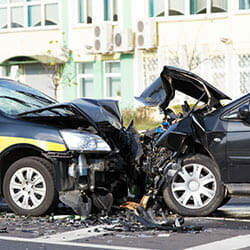
Local Car Accidents, Wrong-Way Collisions On the Rise
- October 5
- Evans/Reilley
- Car Accidents
In August, Austin’s exasperated police chief called for change, following another deadly wrong-way crash. The driver – who had a blood alcohol level nearly twice the legal limit – survived, but her passenger died the next day from her injuries, and another motorist died at the scene. It was the 65th fatal crash in Austin in 2015.
Chief Art Acevedo told TV station KVUE that juries need to be tougher on drunk drivers, and bartenders who over-serve customers should be held accountable. He urged parents to talk to their children about the dangers of drunk driving and the dangers of riding with a driver who has been drinking. He asked people to call the police if they witness a bartender serving an obviously intoxicated patron or if they see drunk drivers on the roadways.
Just six days later, Acevedo was back in the news, commenting on a fiery early-morning crash where a speeding car slammed through a barrier wall on MoPac Boulevard and went airborne before crashing into a building. All four people in the car died at the scene.
Looking for Solutions
The National Transportation Safety Board estimates alcohol is a factor in at least 80 percent of wrong-way crashes. While eliminating drunk driving is the most ideal solution for reducing the number of wrong-way collisions, some people say that improving highway ramp signage could help prevent deadly crashes.
Several states – California, Arizona, Georgia, Virginia, Ohio, and Florida – have lowered the height of “Wrong Way” and “Do Not Enter” signs, in an effort to make them more visible. At night – when most wrong-way crashes occur – lower signs equipped with reflectors may be more likely to get the attention of drivers.
Texas has been slow to adopt the lowering of road signs, but in August, the Texas Department of Transportation approved the installation of lower signs in parts of the state where wrong-way crashes have occurred. So far, no timeline has been announced for sign modifications, and TxDOT told NBC 5 the changes are “an option for districts to take” and that it “will be up to them to do this.”
Changing Behaviors
While alcohol is a factor in many crashes, there are many behaviors that can lead to fatal wrecks, such as speeding, following too closely in traffic, or failing to pay attention. Distracted driving involves any behavior that interferes with a driver’s ability to focus on driving, such as eating, grooming, talking to passengers, reading a map or looking at a GPS system, and talking or texting on a cell phone.
Austin is attempting to curb distracted driving with public awareness campaigns and tougher laws. In January, Austin’s hands-free ordinance went into effect. The law bans the use of handheld electronic devices while driving, and offenders can face fines of up to $500.
Unfortunately, laws don’t necessarily change behavior, as proven by the number of people who choose to drive drunk, even though they know it’s illegal. But as demonstrated in a public service video from the City of Austin, passengers can pressure drivers to avoid unsafe driving behaviors. Hopefully, people can also take a more active role in preventing their friends from driving while intoxicated.

 Serving Clients Throughout Texas
Serving Clients Throughout Texas
 Chip Evans is a partner at Evans & Herlihy. Chip brings to the firm more than 20 years of experience as a trial lawyer representing Plaintiffs. It is the desire to help individuals, not corporations, that attracts Chip to this side of the docket. [
Chip Evans is a partner at Evans & Herlihy. Chip brings to the firm more than 20 years of experience as a trial lawyer representing Plaintiffs. It is the desire to help individuals, not corporations, that attracts Chip to this side of the docket. [